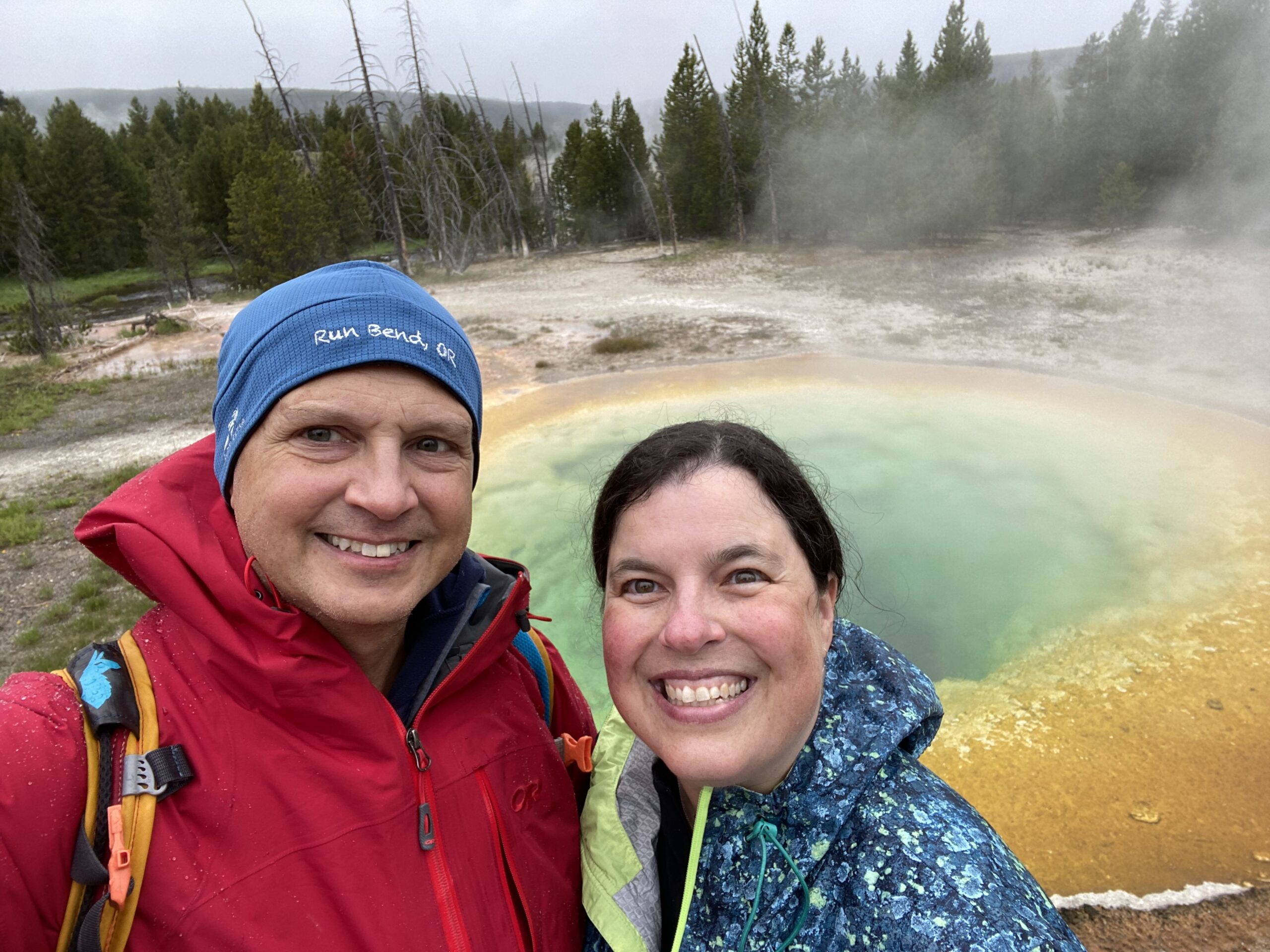Yellowstone was the nation’s first national park and one of the country’s best ideas. It’s truly a unique place: 3,500 square miles of pristine wilderness, geothermic features and abundant wildlife all situated around a massive traffic jam.
The park’s size means you’ll spend a ton of time driving from one feature to another, and it’s popularity means the roads are packed with cars. Throw a bison or grizzly bear alongside the road and you’re looking at mile-long backups.

Don’t get me wrong, Yellowstone is a marvelous place and we enjoyed our five days there. But the traffic is something you have to put up with to see its riches.
We made the short drive to Yellowstone from Grand Teton. The parks are divided by only 31 miles of non-park land.

We had reservations at the Grant Village campground but arrived about two hours before check-in time. The campground staff wouldn’t allow us into our spot early, so we drove over to the Visitors Center to get our passport book stamped and to get a lay of the land. We saw an interesting exhibit about fire in Yellowstone, particularly the 1988 fire which burned more than a third of the park.
After lunch, we went to claim our campsite and headed straight for the showers. There were no free showers at Grand Teton, so we were due. Interestingly, the campground provides a pass to a shower facility with two showers per campsite per night included. The showers were actually pretty nice, although the water doesn’t get that hot when a lot of them are in use simultaneously.

Despite it being the middle of June, temps were fairly cool when we arrived. Our second day, it barely reached the 60s and rained most of the day. We spent that rainy day touring the Upper Geyser Basin, starting with Old Faithful and walking several miles of the boardwalk through the geothermal features that characterize the national park.

Those include geysers and mud pots and hot springs, many of which display bright orange or blue colors depending on what bacteria thrives within their waters. It’s a surreal landscape made all the more strange by the wet weather.
Mother Nature apparently wasn’t done with us yet. The next morning we woke up to snow. It had dropped into the 20s overnight and we got about 2 inches of snow cover that day. Fortunately, the sun was out and the snow quickly melted.

We spent a second day touring the geysers and hot springs north of the Old Faithful area, including the Grand Prismatic Spring. It’s really one of the more spectacular natural displays we’ve ever seen: 200 to 300 feet in diameter, with a deep blue eye transitioning to bright green, yellow and orange hues around the edges.
It’s so massive that you can’t even see it in its entirety standing next to it. The best view is found by hiking up the Fairy Falls Trail to an overlook where the entire spectacle fits within your camera’s screen. It’s best to see Grand Prismatic later in the day after temperatures warm up a bit and the steam dissipates. On this day, however, it never really got warm to chase the billowing steam away.

Beyond the geothermic sites, Yellowstone is probably best known for its wildlife. Bison are abundant here, and I don’t think there was a day in the park that we didn’t see herds and herds of buffalo. We also saw elk, deer and bears, both black and grizzly. What I really wanted to see was a wolf.
Lamar Valley is the best place to see them, and the best time is either at dusk or dawn. So on our last full day in the park, we got up at 4 a.m. and drove more than an hour to the valley. We noticed a ton of cars, including several tour group vans, around the entrance to Slough Creek. We had heard that was a spot that wolves frequent and so we parked our truck and scrambled over to the line up of people with spotting scopes and cannon-like camera lenses. Sure enough, there were wolves up in the hills in front of us.
But we couldn’t see them.
Armed with just a pair of binoculars and a 300mm camera lens, we scanned the area where the wolves were supposedly resting. I thought I had found one, but it turns out I spent 15 minutes staring at a dark rock waiting for it to move.

Sure, we saw more bison, a bear and even a sandhill crane, but the day was a disappointment for not having seen Canis lupus.
It was poor planning not to have researched wolf-spotting tours before we came. It looked like a pretty nice set up. The tour guides drive you to the best spots to see wildlife, set up high-powered spotting scopes and ply you with soup, coffee or hot chocolate while you watch the show. It’s going to be something I add to my bucket list, that is, if I can stand the traffic.
Days: 142
Miles Traveled: 20,413
Next stop: Bozeman, Montana


